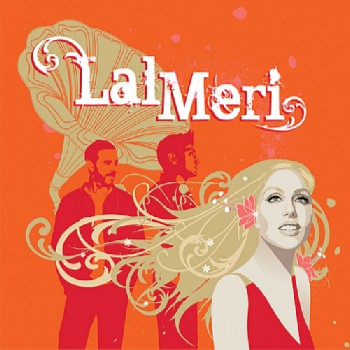
 “I
think that we all had different roles in making it work and bringing it
together, which is good, because if it was left to one person, it would be less
exciting. It was an organic process as to how the music came about. Ireesh put
together some tracks, I recorded the vocals at my house, and Carmen arranged
things. We all had different ideas of what we wanted, but after we figured out
how the other two worked, we really came together with some excellent harmony,”
says Kaye.
“I
think that we all had different roles in making it work and bringing it
together, which is good, because if it was left to one person, it would be less
exciting. It was an organic process as to how the music came about. Ireesh put
together some tracks, I recorded the vocals at my house, and Carmen arranged
things. We all had different ideas of what we wanted, but after we figured out
how the other two worked, we really came together with some excellent harmony,”
says Kaye.
Rizzo
picks up on this theme, “How our records are made, is much different than other
bands, especially this record. It wasn’t like we were a traditional band, in the
sense of you’re this musician and I am that musician or you’re a singer, let’s
hit record and work out songs. There was a lot of pre-production and writing on
the fly, and things like that. Like
“We adopted a bit more of a
global sound, and that attracted
Six Degrees Records.
It was challenging, but for me, I enjoy working in those environments where I do
not do the same thing every time, or when it gets boring and draconian. Ireesh,
Nancy and I all have different backgrounds. It is a true melting pot,” continues
Rizzo.
Kaye cites her reasons for getting involved with the Lal Meri project, “I am always looking for new challenges, new projects and new music. I found pop music to be disappointing, at different times in my life, so I was looking for an opportunity to do something a little more creative. I went into jazz, because I had been writing a lot of R&B songs for other artists and I became bored with that whole scene, so I decided I wanted to do something musically complicated and delve into that world for a while. Once I did that, I wanted to get back to electronic music and dance music, because I love going to clubs. I knew the next record was going to be with people with whom I could make real dreamy, excellent music. Luckily, I found these guys.”
The melting pot reaches epic proportions with the breathtaking beauty of the song, “Borders,” a piece that has as many hues as a rainbow The brass instrumentation adds to a jazz feel, while the use of electronic vibes creates an ethereal ambient atmosphere and Nancy Kaye’s phrasing is impeccable. If “Borders,” was the only tune on this album worth listening to, which it certainly is not, then it would be make the entire record worth the purchase price.
Being a part of Lal Meri, has allowed Nancy Kaye to
expand her songwriting borders, “This experience has been great for me as an
artist and it really forced me to write from a different place, within myself,
and that was a place that I needed to go, deep inside and pull out some of the
beauty and some of the ugliness to see what sort of blanket I could weave. I
have been really affected by pop music and not in a positive way. I wanted to
create something that was different, original and from my heart. It was an
amazing experience and I am grateful for it,” she says.
Kaye continued to color outside the lines with “Sweet Love,” a song that is sexy, without being overtly sexual. It is an outpouring of love, without being syrupy, and it once again provides a gorgeous fusion of percussion with electronic music. Pooja Lal’s vocals and Nancy Kaye’s vocals were mixed together, and with Carmen’s sophisticated production skills, the song became another outstanding work of art. One gets the sense when listening to songs such as, “Sweet Love,” that you are hearing songs that are completely revolutionizing the way we think of music.
Rizzo says, “We hope that
people who have good taste and have an open mind, will find our music and enjoy
it. I don’t think that you have to like world music, or that you have to like
electronica.
As for the talking heads in the land of commercial radio
where money greases the airwaves and good art is not the prime motivator behind
the number of spins a song receives, Ireesh Lal, seems to have come up with an
interesting observation, “I think that when you listen to this and you listen to
pop music on the radio today, I am sure that it is hard to imagine high school
kids or junior high kids listening to (our music). However when I go back to
junior high, none of us really listened to what was on the radio. At that time
grunge was underground and it was different. I don’t think that the kids who are
really into music are listening to the stuff that is on pop radio today.”